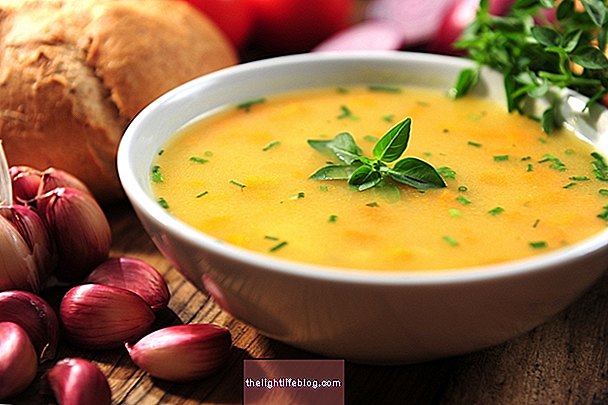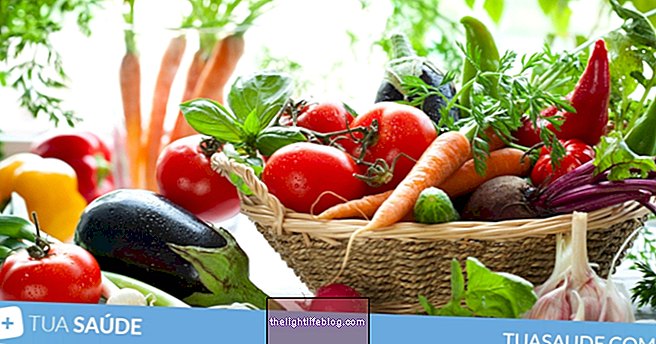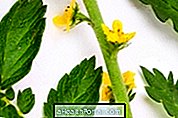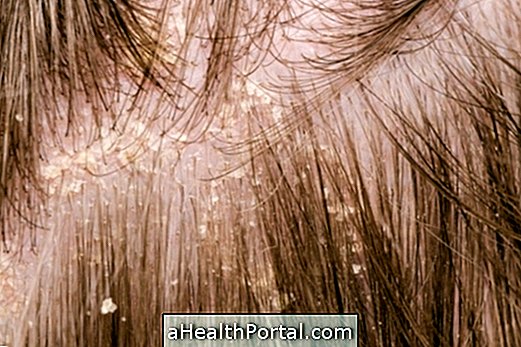Wild rice, also known as wild rice, is a very nutritious seed produced from aquatic algae of the genus Zizania L. However, although this rice is visually similar to white rice, it is not directly related to it.
Compared to white rice, wild rice is considered a whole grain and has twice the amount of protein, more fiber, B vitamins and minerals such as iron, calcium, zinc and potassium. In addition, wild rice is rich in antioxidants and, therefore, its regular consumption is associated with several health benefits.

The consumption of wild rice can bring several health benefits, since it is a whole grain, the main ones being:
- Combats constipation, since it improves intestinal transit and increases the volume of feces, favoring, together with water consumption, the exit of feces;
- It helps to prevent cancer and prevent premature aging, as it is rich in antioxidants, mainly phenolic compounds and flavonoids, which are responsible for protecting the body from free radical damage;
- It helps to prevent cardiovascular diseases, since it is rich in fibers, which are related to the reduction of total cholesterol, LDL (bad cholesterol) and triglycerides, promoting heart health;
- It favors weight loss, since it is rich in proteins, increasing the feeling of satiety thanks to its amount of fibers and helping in the regulation of insulin.A study carried out with rats indicated that wild rice could prevent the accumulation of fat and favor the increase of leptin, which is a hormone found in high concentrations in people with obesity. Although this hormone is related to decreased appetite, in people with excess weight there is the development of resistance to its action;
- It helps to control the amount of sugar, preventing diabetes, as the absorption of carbohydrates at the intestinal level is slower, causing glucose to increase progressively and insulin to regulate its concentration in the blood.
It is important to mention that there are few scientific studies on this type of rice, and further studies are needed to prove all its benefits. Wild rice can be eaten in a healthy and balanced diet.
Nutritional composition
The following table shows the nutritional composition of wild rice for every 100 grams, in addition to being compared to white rice:
How to prepare wild rice
Compared to white rice, wild rice takes longer to complete, about 45 to 60 minutes. Therefore, it is possible to cook wild rice in two ways:
- Place 1 cup of wild rice and 3 cups of water with a pinch of salt, over high heat until it boils. As soon as it boils, put it on low heat, cover and let it cook for 45 to 60 minutes;
- Soak overnight and repeat the procedure mentioned above and cook for about 20 to 25 minutes.
Some recipes that can be prepared with wild rice are:
1. Watercress salad with wild rice
Ingredients
- 1 pack of watercress;
- 1 medium grated carrot;
- 30 g of nuts;
- 1 cup of wild rice;
- 3 cups of water;
- Olive oil and vinegar;
- 1 pinch of salt and pepper.
Preparation mode
Once the wild rice is ready, mix all the ingredients in a container and season with olive oil and vinegar. Another option is to prepare a lemon vinaigrette and for this you need the juice of 2 lemons, olive oil, mustard, chopped garlic, salt and pepper, mix everything and season the salad.
2. Wild rice with vegetables
Ingredients
- 1 cup of wild rice;
- 3 cups of water;
- 1 medium onion;
- 1 clove of minced garlic;
- 1/2 cup of diced carrots;
- 1/2 cup of peas;
- 1/2 cup of green beans;
- 2 tablespoons of olive oil;
- 1 pinch of salt and pepper
Preparation mode
In a frying pan, place the two tablespoons of oil and sauté the onion, garlic and vegetables, leaving for about 3 to 5 minutes or until soft. Then add the ready-made wild rice, add a pinch of salt and pepper and mix.
See in more detail in the following video how to prepare wild rice with vegetables:

Was this information helpful?
Yes No
Your opinion is important! Write here how we can improve our text:
Any questions? Click here to be answered.
Email in which you want to receive a reply:
Check the confirmation email we sent you.
Your name:
Reason for visit:
--- Choose your reason --- DiseaseLive betterHelp another personGain knowledge
Are you a health professional?
NoMedicalPharmaceuticalsNurseNutritionistBiomedicalPhysiotherapistBeauticianOther
Bibliography
- QIU Yang. Antioxidant activity of commercial wild rice and identification of flavonoid compounds in active fractions.. Conclusion de Maestría, 2009. The University of Manitoba.
- STATE UNIVERSITY OF CAMPINAS - UNICAMP. Brazilian Food Composition Table. 2011. Available at:. Accessed on 03 Feb 2020
- SURENDIRAN Gangadaran, ALSAIF Maha et al. Nutritional constituents and health benefits of wild rice (Zizania spp.). Nutrition Reviews. Vol 72. 4th ed; 227-236, 2014
- QIU Yang. Antioxidant activity of commercial wild rice and identification of flavonoid compounds in active fractions. Master's thesis, 2009. The University of Manitoba.
- STATE UNIVERSITY OF CAMPINAS - UNICAMP. Brazilian Table of Food Composition.. 2011. Available at:. Accessed on 04 Feb 2020
- U.S. DEPARTMENT OF AGRICULTURE. Food Data Central: Wild Rice. Available in: . Accessed on 04 Feb 2020
- HWAN Sun. Diets for Constipation. Pediatric Gastroenterology, Hepatology and Nutrition. Vol 17. 4 ed; 203-208, 2014
.jpg)























